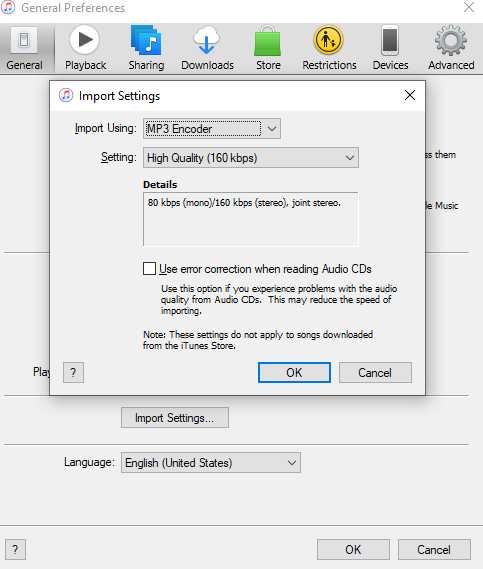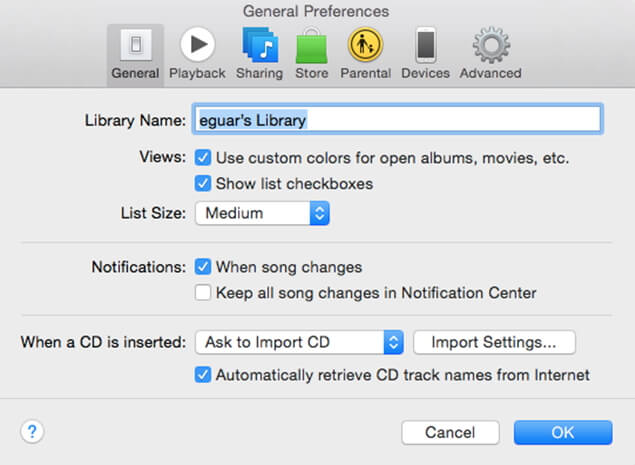
Open Audacity, go to Library Preferences and configure it to search on the well known folder you extracted the files to.
#Mp3 encoder library zip
If you use the installers, and Audacity does not detect LAME, download the ZIP option, extract the files inside to a well known folder, then The Audacity(r) QA Team suggests users download the ZIP version instead of the. TO DOWNLOAD Lame and FFmpeg for Windows, click links BELOW: You want, but the first time you want to export an MP3 file,Īudacity will ask you for the location of this file, so you will To use LAME (or FFmpeg) with Audacity, you can put it anywhere

Feel free to check out this page to download some songs. Kind of home recording, remove noise, etc. Transform ogg to mp3, transform mp3 to ogg, transform vinyls to mp3 or ogg, do any
#Mp3 encoder library license
LAME is a library that allows some programs to encode MP3 files.īut in some countries you may need to pay a license fee in orderĪudacity is a free and open source Audio Editor which allows you to Is NOT affiliated with Audacity(R) in any other way than by compatibility with MP3 Encoding, or the FFmpeg library for wider file format support. In this site, and you will find Audacity-compatible plug-ins and libraries such as those needed for You can check a analysis of this site by clicking here and of Lame_v3.99.3_for_Windows.exe HERE, and of ffmpeg-win-2.2.2.exe here.īanners that look like BIG GREEN DOWNLOAD ARROWS are usually MALWARE. There is VERY important information on the PRIVACY section of this site, which I strongly suggest you read.

If you need assistance, have a problem with my downloads or if youįind malware in any banner ad here.
#Mp3 encoder library mac os
Next = Math.floor(Math.random() * sounds.I am here to help! - Notify me immediately at - Libraries downloaded from file my site are specifically tested to work with Audacity, on Microsoft Windows and Mac OS X. set event handlers on all audio objectsĭocument.getElementById(current + '').classList.remove('playing') ĭocument.getElementById(current + '').classList.remove('paused') ĭocument.getElementById(current + '').classList.add('playing') ĭocument.getElementById(current + '').classList.add('paused') The remainder of the array from FFTW contains frequencies above 10-15 kHz.Īgain, I understand this is probably working as designed, but I still need a way to get more resolution in the bottom and mids so I can separate the frequencies better. However, since FFTW works linearly, with a 256 element or 1024 element array only about 10% of the return array actually holds values up to about 5 kHz. These should be somewhat evenly distributed throughout the spectrum when interpreting them logarithmically. I am also applying a Hann function to each chunk of data to smooth out the window boundaries.įor example, I test using a mono audio file that plays tones at 120, 440, 1000, 5000, 1500 Hz.

I have tried with window sizes of 256 up to 1024 bytes, and while the larger windows give more resolution in the low/mid range, it's still not that much. But with so little allocation to low/mid frequencies, I'm not sure how I can separate things cleanly to show the frequency distribution graphically. I understand that audio is logarithmic, and the FFT works with linear data. Everything works, except the results from the FFT function only allocate a few array elements (bins) to the lower and mid frequencies. I run an FFT function on each buffer of PCM samples/frames fed to the audio hardware so I can see which frequencies are the most prevalent in the audio output. I am trying to build a graphical audio spectrum analyzer on Linux.


 0 kommentar(er)
0 kommentar(er)
